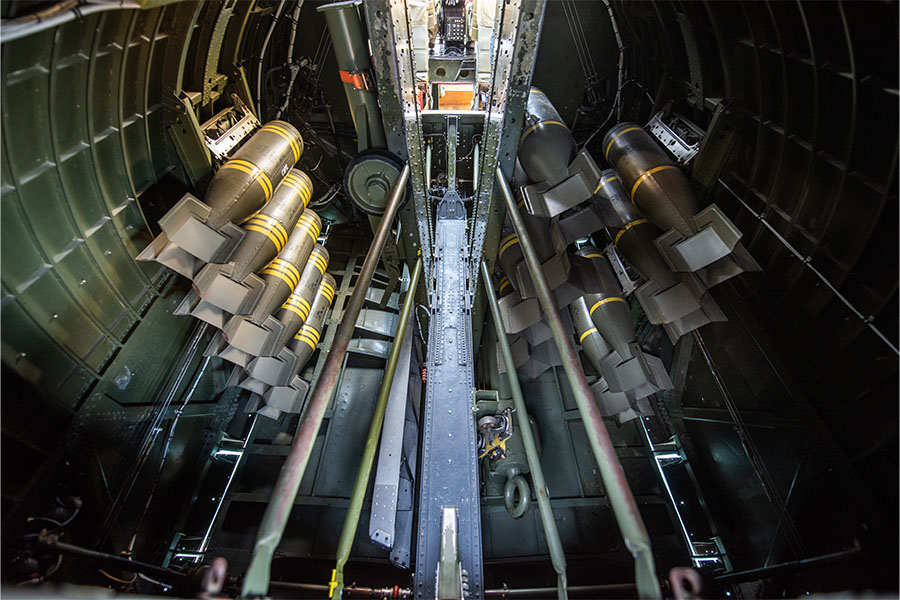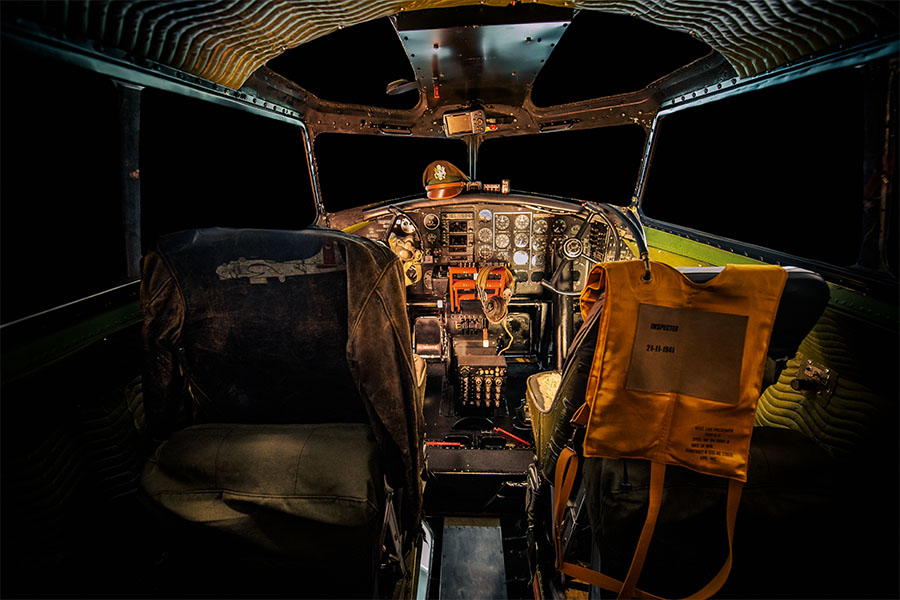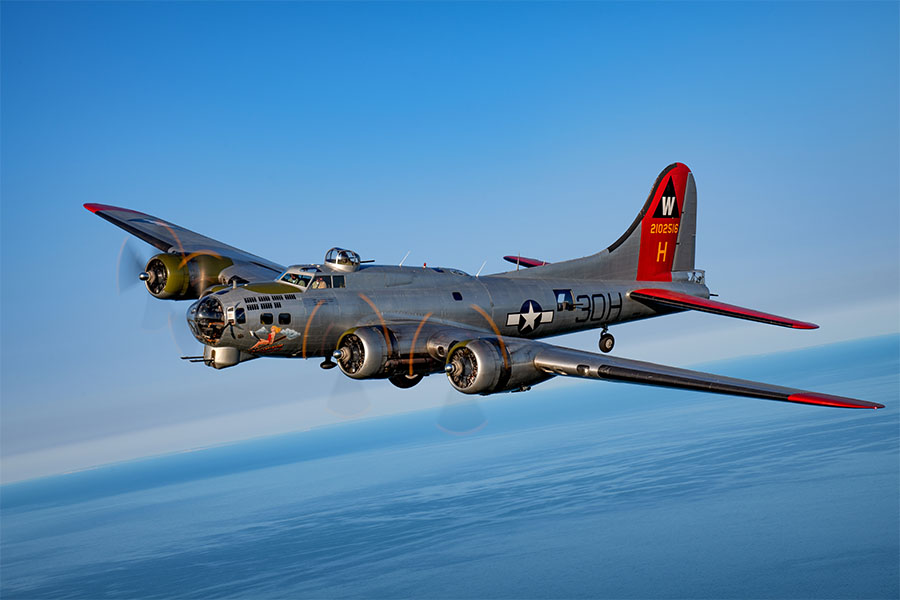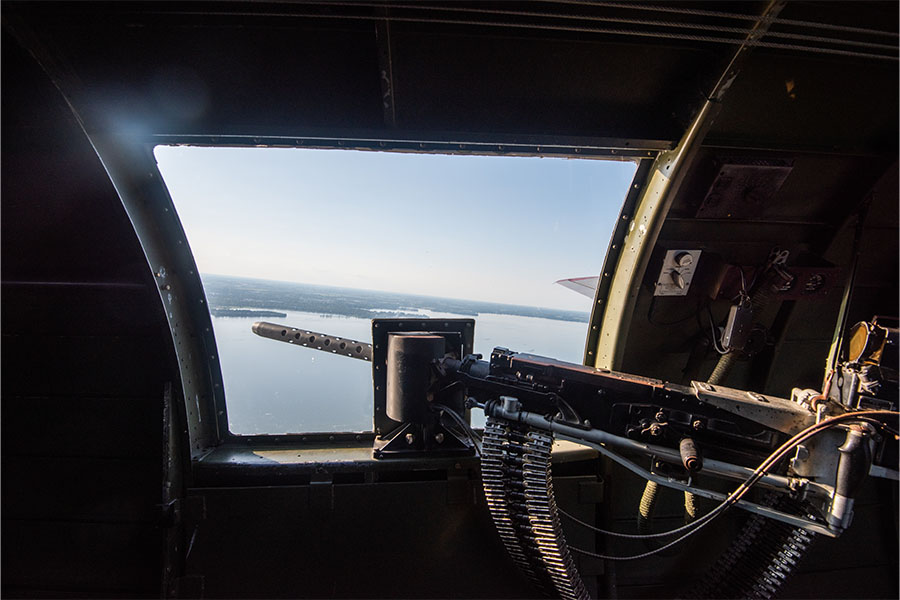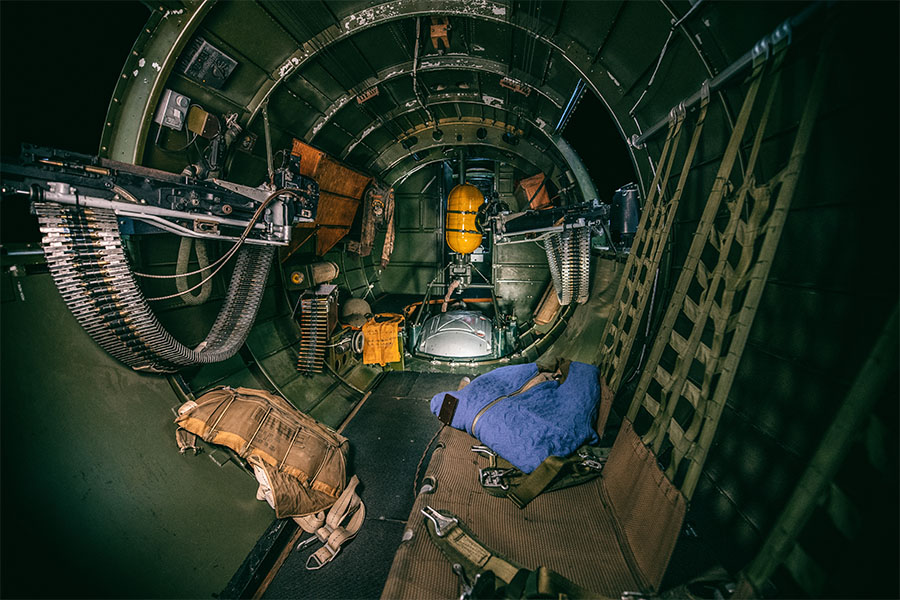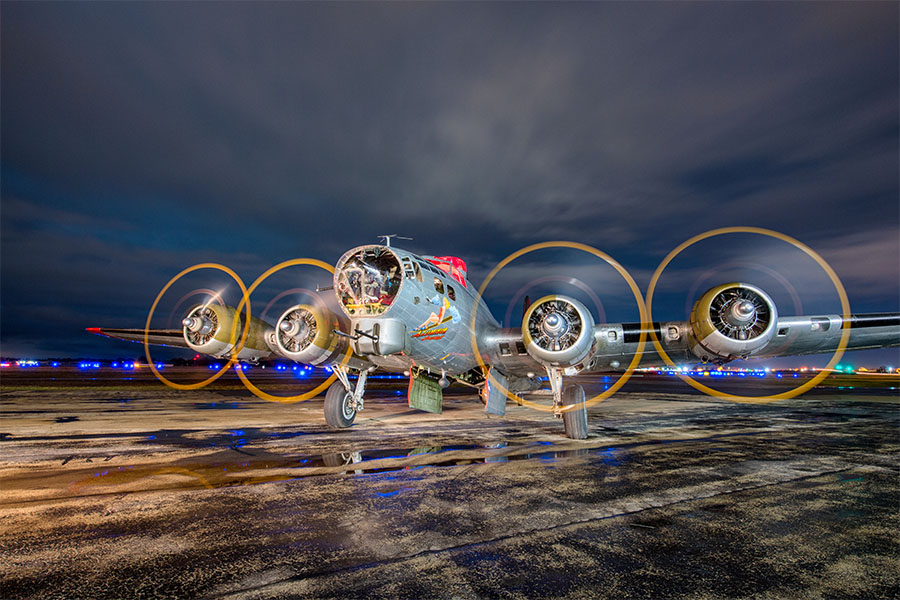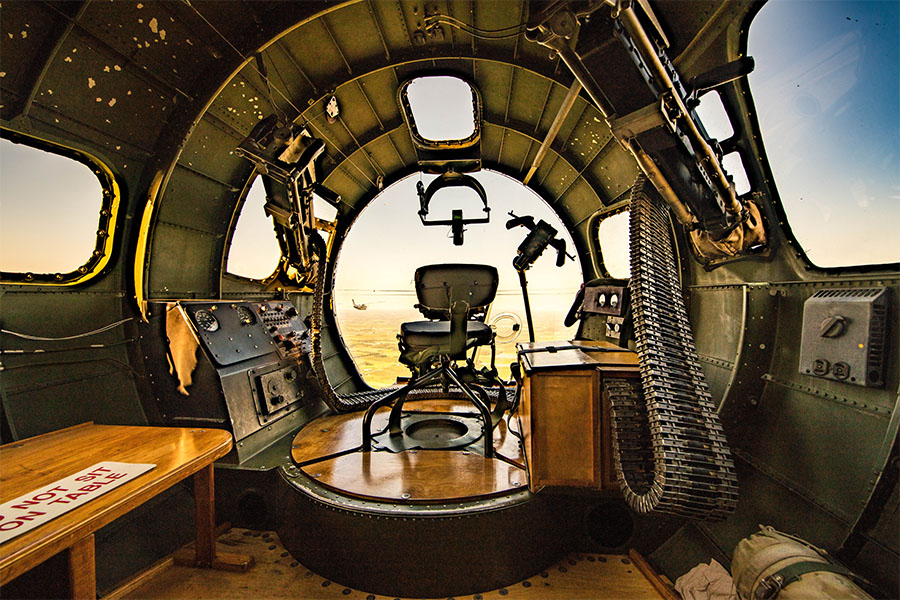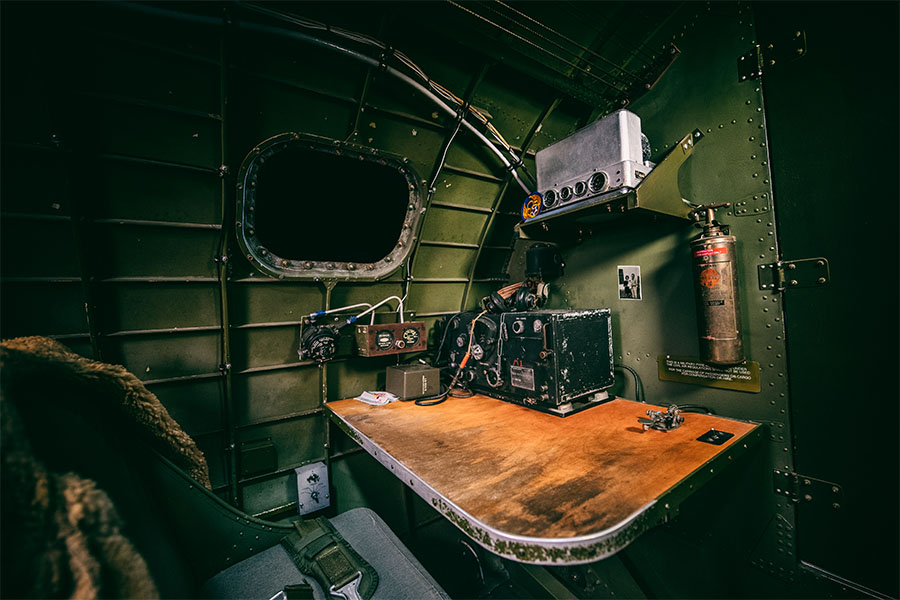B-17 Aluminum Overcast
Location: Eagle Hangar
B-17 Aluminum Overcast
In 1934, the Boeing Aircraft Company of Seattle, Washington, began construction of a four-engine heavy bomber, designated model 299. By 1935, the government ordered production of 13 of these aircraft, designated as the Y1B-17. The B-17 was given the nickname Flying Fortress from a Seattle reporter who commented on its defensive firepower. The B-17 underwent a number of improvements over its 10-year production span, ranging from the YB-17 to the B-17-G model. Aluminum Overcastis a B-17G, the final production model. This variant was produced in larger quantities (8,680) than any previous model and is considered the definitive Flying Fortress. Between 1935 and May 1945, 12,732 B-17s were produced. Of these aircraft, 4,735 were lost during combat missions. At one time, more than 1,000 B-17s could be assembled for mass combat missions. Today, around 50 B-17 airframes exist.
EAA’s B-17 Aluminum Overcast
Aluminum Overcast is a B-17G-VE, Serial No. 44-85740 and was delivered to the U.S. Army Air Forces on May 18, 1945. Although it never saw action in World War II, the airplane has an interesting history. It was purchased as surplus from the military inventory for $750 in 1946. Flying more than 1 million miles it served as a cargo hauler, an aerial mapping platform and in pest control and forest dusting applications. In 1978 the airplane was purchased by "B-17s Around the World," a group of investors wanting to preserve its heritage. However, the economic reality of simply maintaining a vintage bomber, let alone the cost of restoration, prompted the group to donate the B-17 to EAA in 1983.
Restoration
EAA undertook an extensive program of restoration and preservation that took more than 10 years and thousands of hours by dedicated staff and volunteers. The airplane was on display at what is now the EAA Aviation Museum until October 1993 when it was moved to EAA’s Kermit Weeks Flight Research Center for maintenance and restoration in preparation for its first national tour in 1994.
Aluminum Overcast proudly carries the colors of the 398th Bomb Group of World War II, which flew hundreds of missions over Nazi-held territory during the war. Aluminum Overcast commemorates B-17G 42-102516 which was shot down on its 34th combat mission over Le Manior, France, on August 13, 1944. Veterans of the 398th helped finance the bomber's restoration.
When the airplane was sold in 1946, most of the original military equipment had been removed. Over the years, these items have been located, restored, and returned to Aluminum Overcast. These include:
- The Norden bombsight located in the nose of the airplan
- Restoration of the navigator's position also located in the nose of the airplane
- Installation of the waist guns located on each side of the bomber
- Rebuilding the radio compartment, including original communications equipment
- Returning the airplane's floor to its original specifications
- Installation of a complete tail turret assembly
- Installation of a replica top turret just behind the pilot and co-pilot seats
Specifications
Crew:
10; pilot, co-pilot, navigator, bombardier/nose gunner, flight engineer/top turret gunner, radio operator, two waist gunners, ball turret gunner, tail gunner – this would vary slightly later in the war
Length:
74 feet, 4 inches
Wingspan:
103 feet, 9 inches
Height:
19 feet, 1 inch
Wing area:
1,420 square ft
Empty weight:
36,135 pounds
Gross weight:
54,000 pounds
Powerplant:
4 × Wright R-1820-97 "Cyclone" turbosupercharged Mradial engines, 1,200 hp (895 kW) each
Propellers:
Three-bladed Hamilton-Standard constant-speed propellers
Maximum speed:
287 mph
Range:
2,000 miles with 6,000-pound bombload
Armament:
Guns: 13 × .50 inches (12.7 mm) M2 Browning machine guns in 9 positions (two in the Bendix chin turret, two on nose cheeks, two staggered waist guns, two in upper Sperry turret, two in Sperry ball turret in belly, two in the tail, and one firing upwards from radio compartment behind bomb bay)
Bombs:
Short range missions; Internal load only (<400 mi): 8,000 pounds (3,600 kg)
Long range missions; Internal load only (≈800 mi): 4,500 pounds (2,000 kg)
Max Internal and External load: 17,600 pounds (7,800 kg)
